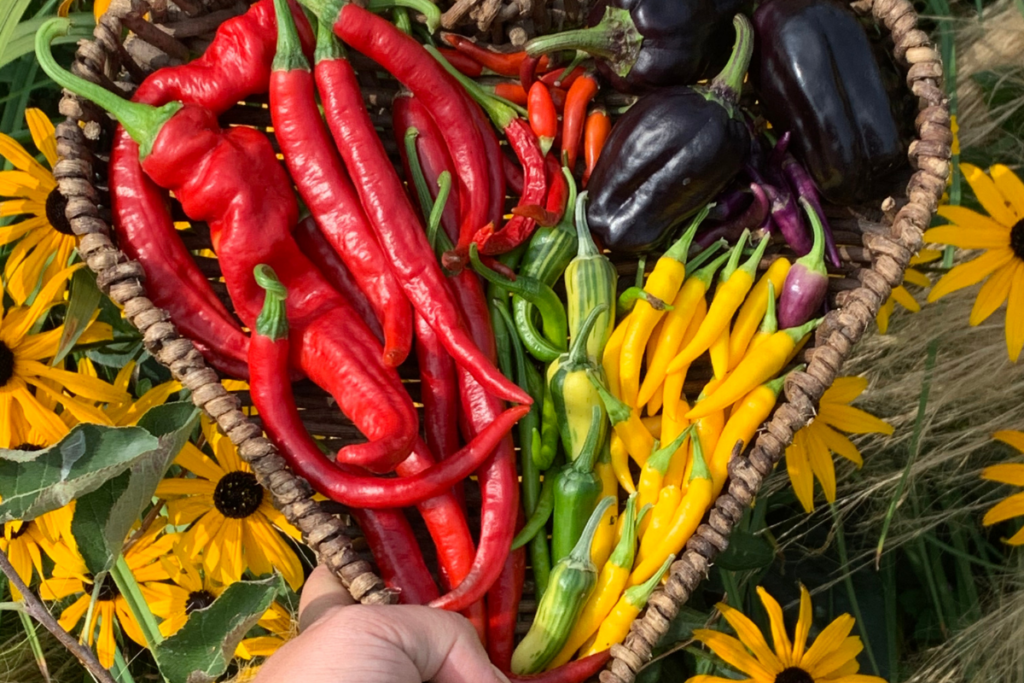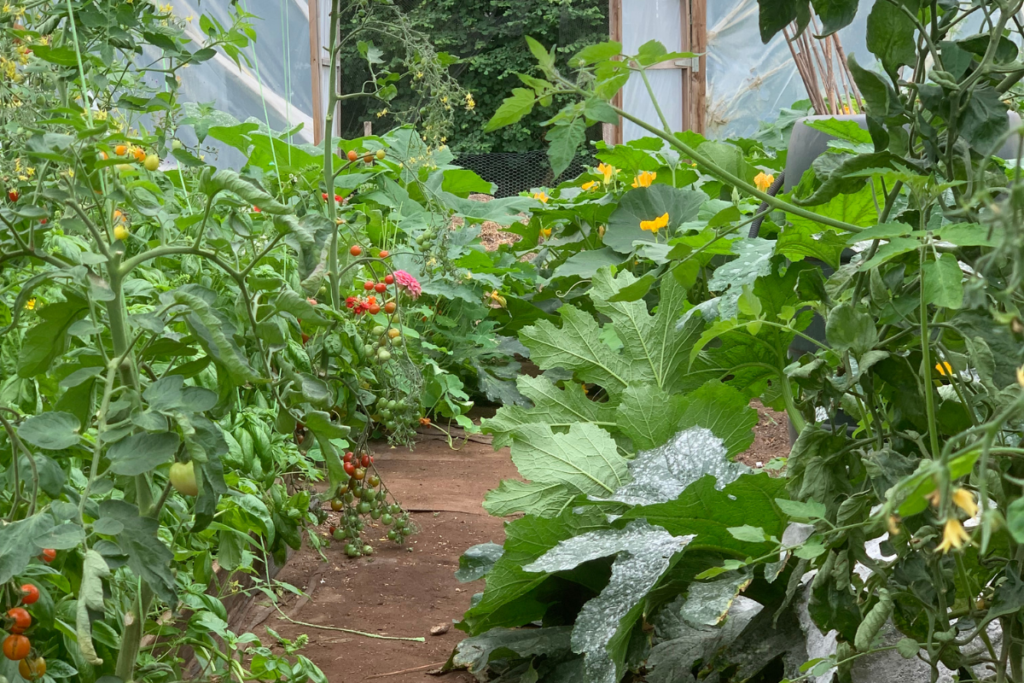Becky Searle explains how to successfully grow these delectable fruits
There are so many options for growing inside a polytunnel, but for me, my favourites are tomatoes and chillies. Compared with what is available in supermarkets, the choice available to the home grower is astonishing. I love choosing off-the-wall varieties like ‘spaghetti’ chillies with their weird, curly, long shapes and ‘dark galaxy’ tomatoes with their resplendent colours and patterns. But neither tomatoes nor chillies are designed to grow in this country.
Chillies need a lot of warmth to grow and even more to become spicy. They produce the spice compounds as a response to heat or drought stress. A chilli outside may grow well, especially in a warm year, but it will probably struggle to create a proper “kick”.

Avoiding tomato blight under cover
Tomatoes, on the other hand, will grow brilliantly outside when it is warm enough, but they are particularly susceptible to blight. Here in the southwest, they’re all but impossible to grow outside. July arrives, and the distinctive overnight wilt and rot comes with it. This is because we experience a lot of rainfall and humidity. Even so-called “blight-resistant” varieties struggle in some years. In a polytunnel, it is possible to regulate the humidity and keep the leaves dry to reduce the chances of getting blight. If you do struggle with blight, I highly recommend investing in side ventilation for your tunnel, preferably with a screen, to keep the warmth in overnight or during the cooler months. Whilst a polytunnel does have ventilation at both ends, when there is little breeze in the summer, the humidity within the polytunnel will otherwise build. This is because plants constantly draw water up through their roots and lose it through their leaves. Water will also evaporate from the soil’s surface, forming condensation and humid air. Side ventilation is simply a panel of mesh that keeps pests out and allows airflow, helping regulate humidity.

Giving tomatoes the support they need
One of my favourite things about growing tomatoes in a poly tunnel is that you can support them from the frame. I usually tie some strong string(I use a macrame cord) to the tunnel frame above my plant and then anchor it into the soil using a landscaping staple ortent peg. Then, as the plant grows, I twist it around the string. This gives it all the support it needs for as high as it can go. This means I can grow tomatoes to their full potential, harvesting lots of beautiful fruits all season without fear of breakage.

While controlling the amount of water you give your plants is undoubtedly a good thing, it can have its downsides if – like me – you like going away during the summer! If this is the case, I highly recommend investing in an automatic watering system or making very good friends with your neighbours, as regular watering in warmer months is essential.
Whatever you choose to cultivate in your polytunnel, you can create your own microclimate, extending the growing season and speeding up growth. For long-season, warmth-loving plants, this indoor growing space is a must.
Find more tips, advice and articles like this at the Amateur Gardening website. Subscribe to Amateur Gardening magazine now.





